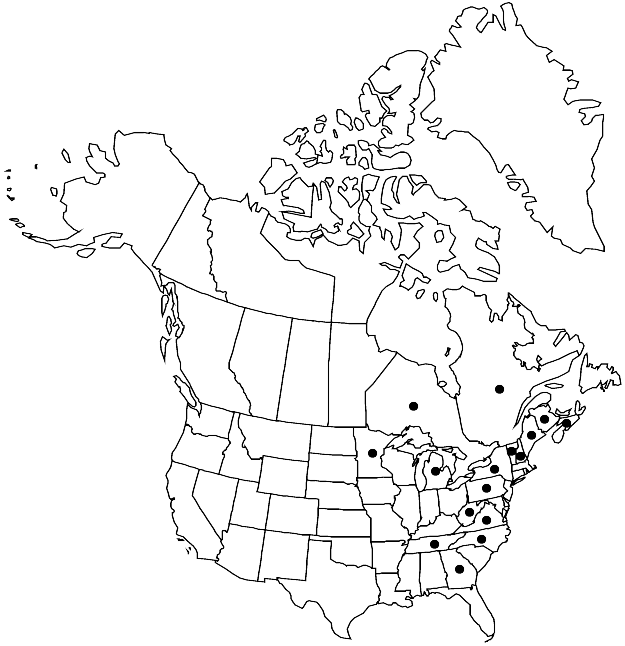Difference between revisions of "Hypnum fauriei"
Beih. Bot. Centralbl. 17: 41, fig. 26. 1904.
FNA>Volume Importer |
FNA>Volume Importer |
(No difference)
| |
Revision as of 22:05, 16 December 2019
Plants medium-sized, yellowish brown to brownish green. Stems 4–8 cm, reddish to yellowish, creeping, often densely branched, regularly to irregularly pinnate, branches 1 cm; hyalodermis absent, epidermis sometimes present, interrupted, especially at leaf decurrencies, central strand weak; pseudoparaphyllia foliose, triangular to lanceolate, margins entire. Stem leaves falcate to circinate, broadly ovate, tapering to apex, 1.4(–2.2) × 0.4(–0.8) mm; base decurrent, not auriculate; margins excavate in alar region, crenate to entire or toothed in acumen; acumen slender; costa double and short or sometimes absent; alar cells rectangular to quadrate, region weakly defined, sometimes with rectangular decurrent cells at insertion; basal laminal cells shorter, thicker than medial cells, not pigmented, walls porose; medial cells 50–70(–80) × 3–5 µm. Sexual condition autoicous; inner perichaetial leaves weakly striate. Seta reddish or yellowish, 3–4 cm. Capsule inclined to horizontal, brown when mature, cylindric, 2–3 × 0.9–1 mm; annulus 3-seriate; operculum conic-apiculate; endostome cilia 2 or 3.
Phenology: Capsules mature Jun–Jul.
Habitat: Tree bases, stumps, rotten logs, humus, rock, mixed forests
Elevation: low to high elevations (0-2000 m)
Distribution

N.B., N.S., Ont., Que., Ga., Maine, Mich., Minn., N.H., N.Y., N.C., Pa., Tenn., Vt., Va., W.Va., e Asia (Altai Mountains, Japan, Korea, Russia).
Discussion
Hypnum fauriei is found at lower elevations in the northern part of the range but at higher elevations in the mountains southward. The species has posed difficulties since its early report from North America as H. fertile, a species restricted to Europe. Hypnum fauriei appears to be uncommon, but superficial examination could allow misidentification as H. imponens or H. plicatulum. The larger number of alar cells, often delimited by pigmented cells nearby, the erect capsules, and the broad, foliose, toothed pseudoparaphyllia easily distinguish H. imponens from H. fauriei, which has occasional triangular to lanceolate pseudoparaphyllia and inclined capsules. Hypnum plicatulum has few alar cells, but the leaf bases are somewhat to strongly auriculate, the plants are yellow-green, and the hyalodermous stem cells are apparent, all features absent in H. fauriei. Hypnum fauriei is the correct name for specimens named H. fertile by American authors. Plants of H. fauriei have branches 1.3 mm wide and are often attached to the substrate by many rhizoids; the leaf bases are yellowish brown and have few (1–3) often bulging alar cells; the two or three supra-alar cells are subquadrate to rectangular; the medial laminal cells are linear to slightly vermicular; and the endostome segments have large perforations.
Selected References
None.